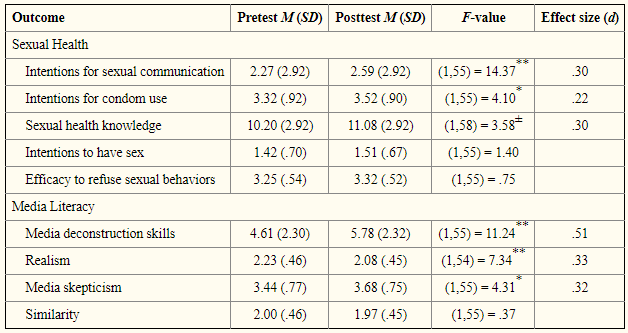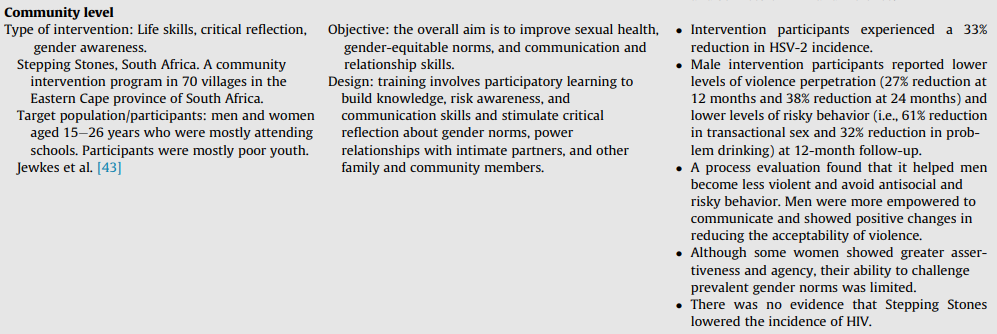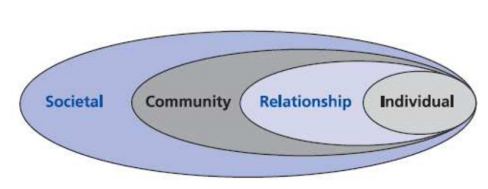Abstract
This paper focuses on the examination of sexual and reproductive health literacy’s role in the social adaptation of women. Based on the critical literature review, the importance of the topic is introduced from the point of the current situation. Many young girls and women tend to lack basic knowledge and skills regarding their own bodies, which leads to a range of adverse issues. In particular, difficulties in communication with partners, inability to create strong family relationships, early pregnancies, as well as sexually-transmitted diseases may be noted among the most common consequences. This study determines that the mentioned health literacy is likely to improve women’s opportunities to successfully adapt to society. The effectiveness of sex education may be traced via females’ awareness of gender identity, sexuality, and the increased quality of life.
Research Paper Final Draft
In the 21st century, the problem of sexual and reproductive health literacy and its impact on women’s adaptation to society became critical. It is largely associated with the sexual revolution – the age of sexual debut fell drastically, and teenagers began to initiate sexual activity much earlier than before. As a result, unregulated sex, the threat of unwanted pregnancies and forced abortions, as well as infection with sexually-transmitted diseases such as HIV/AIDS have increased (Scull, Malik, & Kupersmidt, 2014). Along with these consequences, women tend to encounter psychological discomfort, misunderstanding from others, and a lack of knowledge about their own body functioning. In this connection, it is essential to examine the role of sexual and reproductive health literacy in the social adaptation of women.
Methods
In the context of the qualitative research design, the literature review will be used as a key method of the study. The electronic databases will be searched for scholarly articles published recently in peer-reviewed journals. After that, the most relevant ones will be selected to be used in the given study. The presentation of the results will be followed by the discussion of findings and their critical interpretation.
During crucial periods in individuals’ psychological and physical development, the role of sex education should not be underestimated. It is unclear whether education received in adolescence is enough for promoting long-term sexual health literacy, especially in terms of avoiding unwanted pregnancies and sexually transmitted diseases (Graf & Patrick, 2015). Therefore, the purpose of the present research is to examine the impact of sexual health literacy on the reproductive behavior of the female population and identifying factors that contribute to improved or decreased sexual health literacy among women.
By conducting a literature review of published studies on sexual health literacy, the researchers aim to answer the following questions:
- Does sexual health literacy have an effect on women’s adaptation in society?
- How sexual health literacy helps women avoid dangerous health implications such as abortions and sexually-transmitted diseases?
- Is there an optimum timeframe within which sexual literacy education yields the most beneficial outcomes for women?
A literature search was conducted in order to find articles on the relevant topics that meet the inclusion criteria. For ensuring the relevancy of the findings, it was chosen to search for peer-reviewed articles published between 2012 and 2018. Databases used in the process included MEDLINE, PubMed, PubMed Central, BMJ Best Practice, CINAHL, and DynaMed Plus. Also, the researcher used Google Scholar for supplementary materials as well as conducting backward and snowball searches of articles that have been found initially. Keywords used for finding articles included words and word combinations such as health literacy, sexual health, sexual health literacy, reproductive health literacy, the impact of health literacy, sexual health literacy benefits, education of sexual literacy, and reproductive health literacy education. The keywords were selected in a way that could yield enhanced transparency and reproducibility of the study.
In order to be included in the literature review, studies had to satisfy several criteria; they were the following:
- A research article explored the problem with the help of a representative population sample;
- Sexual health literacy was found to be either beneficial or not beneficial to the overall health awareness of participants;
- Articles were peer-reviewed research studies: quantitative, qualitative, mixed-methods research;
- Research was reported in English and published in a reputable journal;
- Studies on sexual health literacy conducted from different perspectives.
In terms of exclusion criteria, research articles were not explored in the literature review if they were:
- Published earlier than January 2012;
- Did not include a definite conclusion regarding the impact of sexual health literacy;
- Were written in a language other than English;
- Described study protocols or study design without conducting research.
When it comes to the selection of articles and the extraction of data for the review, several steps should be reported. As the literature search was conducted, a list of all initial hits was completed in a Word document. The researcher removed repeated articles and screened the abstracts of the remaining articles to identify studies that could be further analyzed on the basis of inclusion and exclusion criteria. Filtering through research articles, those meeting the exclusion criteria were disregarded while the rest of the studies were examined. Relevant data were extracted from the results of the studies and the methods implemented for reaching the findings.
Apart from this, it was found that the levels of sexual health literacy varied between the representatives of different populations, as suggested by Simpson et al. (2015). The researchers found that individuals who came to study in a foreign country had a decreased level of sexual health literacy compared to domestic students. This points to the fact that raising awareness of sexual health literacy is necessary for higher educational facilities because they represent new chapters in individuals’ lives as well as imply higher risks of dangerous sexual behaviors.
Limitations
Since the topic of sexual health literacy has only recently started getting the attention of researchers, the review of the literature was limited to a small number of studies that could be analyzed in detail. Also, several studies that met the inclusion criteria had to be removed because of the inability of the researchers to find full versions of published articles. Given the fact that only the mentioned limitations were identified, it could be concluded that the study did not encounter many barriers that could have made the findings insufficient or unreliable.
Ethical Considerations
The lack of sexual health literacy in a female population may lead to a range of unwanted complications such as sexually-transmitted diseases, unwanted pregnancies, and mental distress. This means that the topic is highly sensitive and requires extra attention from researchers that examine it in detail. When conducting a review of relevant literature on the topic of sexual health literacy among the female population, the researchers made an effort to ensure the exclusion of any personal information about the subjects of relevant studies. The researchers took a generalized approach toward the reporting of their findings to avoid specifying sensitive data or citing other articles word-for-word. It should also be mentioned that no conflict of interest was identified.
Study Implications and Significance
The findings of the study on women’s sexual health literacy suggest that the issue has a wide impact and requires the close attention of policymakers. There are several pathways for improving reproductive and sexual health literacy, and many of them can also contribute to establishing gender equality. For instance, girls should be provided with numerous educational resources on sexual health literacy. Also, extra efforts are needed to improve the future economic opportunities of girls to make sure that they stay motivated to get an education and pursue a career prior to considering getting pregnant and raising children. This issue is of particular relevance in the context of developing countries where the role of women is diminished to childbearing and household work.
In terms of the directions for future research, the differences between male and female sexual health literacy can be examined. Because it was found that women suffer from adverse mental and physical health outcomes when they lack education on maintaining sexual and reproductive health (Svensson, Carlzén, & Agardh, 2017), it could be beneficial to study the same problem as it applies to men. Since there are serious discrepancies in health literacy associated with gender inequality, it is suspected that straight men will not experience the same health outcomes linked to sexual health literacy. On the other hand, the issue of inefficient sexual health literacy remains high on the agenda for gay men because of a disconnect in service providers’ efforts to address the needs of this target group of patients (Gilbert et al., 2015). Overall, the current study provided numerous opportunities for future studies on the topic of sexual health literacy.
Results
The problem of sexual literacy is one of the most relevant in the general context of women’s health. The specificity of the process of socialization of females makes it possible to consider such education to be legitimate from the very adolescence (LaRosa, Alexander, & Bader, 2016). The current situation is complicated by a common, often concealed, but quite a certain feeling of insecurity about matters relating to sexuality, which leads to an unwillingness to touch on this topic or restrict oneself by using general phrases or abstract reasoning (LaRosa et al., 2016). The breach of normal communication, unnecessary stress in interpersonal relationships, distorted self-esteem, and vague gender identity are only some of the signs that signalize a lack of sexual and reproductive health literacy.
The fact is that sexuality and reproductive health are a rather important and complicated part of both the personal and social life of a woman. There are various prejudices about the roles of women in society. Also, the evidence shows that the lack of sexual health literacy leads to early pregnancies and sexually-transmitted diseases. In this regard, LaRosa et al. (2016) note that not only about health and methods of contraception should be clarified but also dating issues and the cultural characteristics associated with the intimate life. Among the negative impacts on women, it is also possible to identify divorce as sometimes the absence of a conversation about sexuality in a couple leads to resentment and accumulated anger (LaRosa et al., 2016). This causes violence as men do not understand boundaries, and women do not realize their rights.
Some experts such as Svanemyr, Amin, Robles, and Greene (2015) argue that sex education works best when it begins in adolescence. By discussing important issues in a comfortable environment instead of merely talking about the structure of their genital organs, it is possible to achieve significant results. Svanemyr et al. (2015) consider that the establishment of a trusting atmosphere and honest conversation about the ethical and psychological aspects of relationships will help women in their social adaptation (Figure 1 and Table 2). Namely, they will learn about respect for personal boundaries, harmony, pleasure, sexual orientation, and ideas about one’s own body. The study of Chicago women’s experience proves that the sexual education of females can be very effective in reducing the prevalence of risk behaviors and, moreover, in ensuring proper decision-making regarding contraception (Yee & Simon, 2014).
The review of the literature shows that various modern means of communication may be used to provide women with sexual and reproductive health literacy. For example, Scull et al. (2014) examine the role of media as a comprehensive teaching tool and conclude that mass media is frequently preferred by adolescents to obtain new information (see Table 1). Accordingly, the authors suggest that this method is a quite feasible and effective way to assist women in their adaptation to society.
Discussion
The system of sex education is to be considered the most progressive in many Western countries, including the US. Today, it involves a discussion of different aspects of close relationships between people and everything that can affect them such as talking about alcohol, discussing gender issues, and women’s views about their own bodies (LaRosa et al., 2016). There are many programs and models aimed at promoting health, preventing diseases, and providing adequate assistance to women. The clinical practice shows that sexual education mainly leads to responsible behaviors of females.
Society recognizes the rights and needs of female adolescents to receive assistance in solving problems related to contraception (Yee & Simon, 2014). Society should also teach adolescent girls to be equal in discussing and solving problems as responsible parties to the decisions made. It seems essential to emphasize that the sexual behaviors of young people are constantly changing and characterize the time and society in which they live. The fact is that the health care system contributes to the subsequent continuous monitoring and support of the sexual behavior of this target group.
The evidence shows that reproductive and health literacy promotes the postponement of the onset of sexual activity and a decrease in the number of sexual partners of young females. The comprehensive sexual education instills communication skills between women and their partners as well as generally contributes to a healthier lifestyle (Svanemyr et al., 2015). One may state that women who have adequate sexual literacy tend to be more sensitive in selecting a sexual partner and building healthy relationships. Such women tend to prevent sexual violence or report about it without fear of being insulted by others. Most importantly, they show greater ability to discuss reproductive issues with their partners in the course of planning children or sharing some concerns regarding health issues. In its turn, reproductive literacy leads to awareness of social norms, gender specifics, and a clear understanding of the roles of men and women.
References
Gilbert, M., Ferlatte, O., Michelow, W., Martin, S., Young, I., Donelle, L., … Flowers, P. (2015). Sexual health literacy – An emerging framework for research and intervention to improve sexual health for gay men. Sexually Transmitted Infections, 91(2), 85.
Graf, A. S., & Patrick, J. H. (2015). Foundations of life-long sexual health literacy. Health Education, 115(1), 56-70.
LaRosa, J. H., Alexander, W., & Bader, H. (2016). New dimensions in women’s health (7th ed.). Burlington, MA: Jones & Bartlett Publishers.
Scull, T. M., Malik, C. V., & Kupersmidt, J. B. (2014). A media literacy education approach to teaching adolescents comprehensive sexual health education. The Journal of Media Literacy Education, 6(1), 1-14.
Simpson, S., Clifford, C., Ross, K., Sefton, N., Owen, L., Blizzard, L., & Turner, R. (2015). Sexual health literacy of the student population of the University of Tasmania: Results of the RUSSL Study. Sexual Health, 12(3), 207-216.
Svanemyr, J., Amin, A., Robles, O. J., & Greene, M. E. (2015). Creating an enabling environment for adolescent sexual and reproductive health: A framework and promising approaches. Journal of Adolescent Health, 56(1), 7-14.
Svensson, P., Carlzén, K., & Agardh, A. (2017). Exposure to culturally sensitive sexual health information and impact on health literacy: a qualitative study among newly arrived refugee women in Sweden. Culture, Health, and Sexuality, 19(7), 752-766.
Yee, L. M., & Simon, M. A. (2014). The role of health literacy and numeracy in contraceptive decision-making for urban Chicago women. Journal of Community Health, 39(2), 394-399.
Tables


